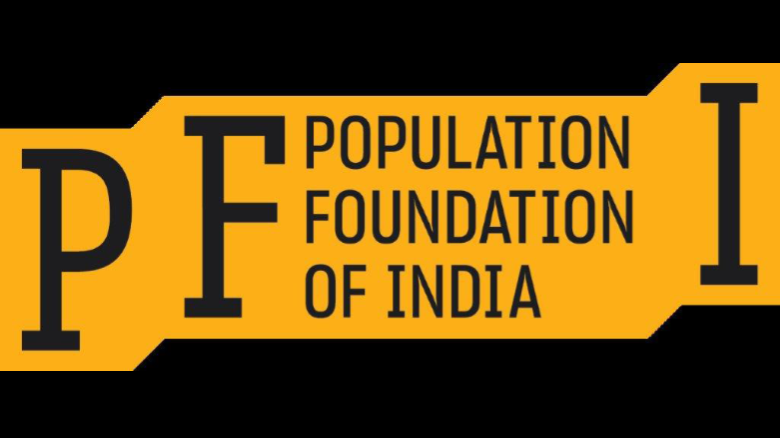
Population Foundation of India Statement on NFHS-5 Data
Fifth National Family Health Survey -NFHS 5 (2015-16) data for 17 states and 5 Union Territories released by the Ministry of Health and Family Welfare
The first set of findings from the fifth round of the National Family Health Survey (NFHS), conducted in 2019-20 were released by the Ministry of Health and Family Welfare, Government of India on Saturday, December 12th, four years after the last survey (NFHS-4, 2015-16). NFHS 5 merits urgent attention, as this is the most comprehensive, robust data at scale on health and family welfare and emerging issues in this area.
The findings cover 17 states and 5 Union territories.[1]
While the detailed report with data for all states is awaited, Population Foundation of India has analysed the first phase of the NFHS-5 data and some of the key highlights from the state/UT factsheets are shared below:
The achievements:
- India’s population is indeed stabilising, as Total Fertility Rate has decreased across majority of the states. Of the 17 states analysed in the NFHS-5 data, except for Bihar, Manipur and Meghalaya, all other states have a TFR of 2.1 or less, which implies that most states have attained replacement level fertility.
- All 17 states have witnessed an increase in use of modern contraceptives of family planning.
- The proportion of women with unmet need for family planning who want to stop or delay childbearing but are not using any method of contraception has declined in all states, except Meghalaya and Andhra Pradesh.
- Except for Manipur, all states have reported an increase in users getting information on side effects of current contraceptive methods.
- There is greater use of hygienic methods of protection during menstrual period by women in a number of states.
There has been some improvements in women’s empowerment related indicators. More women are able to participate in household decision making in 9 states while 30% more women now have bank accounts in Assam, Bihar, Gujarat and West Bengal.
The concerns:
- NFHS 5 data shows a decline in nutritional status of children under 5 years in a number of states. In Kerala, which is considered to be an advanced and model state for others, the percentage of children under 5 years with stunting has increased to 23.4% as per NFHS 5 against 19.7% in NFHS 4.
- Anaemia among women remains the big concern. In all the states, anaemia is much higher among women compared to men.
- Female sterilization continues to dominate as the modern method of contraceptives in states like Andhra Pradesh (98%), Telangana (93%), Kerala (88%), Karnataka (84%), Bihar (78%) and Maharashtra (77%).
- Male engagement in family planning continues to be limited and disappointing as seen by the low uptake of condoms and male sterilization across states.
- Despite the efforts being made, it is alarming to see the increase in child marriages in a number of states. There has been an increase in child marriages in Tripura (40.1% from 33.1% in 2015-16), Manipur (16.3% from 13.7% in 2015-16) and Assam (31.8% from 30.8% in 2015-16), while states like West Bengal (41.6%) and Bihar (40.8%) still have high prevalence of child marriages.
- States like Manipur, Andhra Pradesh, Himachal Pradesh and Nagaland have also shown increase in teenage pregnancies. Along with increase in child marriage, Tripura has also shown an increase in teenage pregnancy from 18.8% in 2015-16 to 21.9%.
- It is very concerning to see the increase in average out of pocket expenditure (OOPE) per delivery in public health facilities in some states. Compared to NFHS-4, OOPE has increased in several states – Sikkim (109%), Mizoram (63%), Bihar (60%), Assam (42%) and Manipur (40%)
- While spousal violence has generally declined in most of the states and UTs, it has witnessed an increase in five states, namely Sikkim, Maharashtra, Himachal Pradesh, Assam and Karnataka. Karnataka witnessed the largest increase in spousal violence, from 20.6% in NFHS 4 to 44.4% in NFHS 5. Sexual violence has increased in five states (Assam, Karnataka, Maharashtra, Meghalaya and West Bengal).
- The NFHS-5 depicts a stark disparity in access to the internet by men, in contrast to women in a number of states. In Karnataka and Bihar, for example, twice as many men have access to the internet as compared to women. Sikkim is the only state where access to internet among men (78.2%) and women (76.7%) is almost equal.
Population Foundation of India welcomes the progress made on several health, fertility and women’s empowerment related indicators in NFHS 5. However, what merits serious concern is that this data was recorded before the pandemic wreaked further havoc on our health and lives.
What Next?
We recognise that all governments, at the Centre and in the states as well as citizens, and civil society organisations are far more attentive to health-related issues in the wake of the pandemic that is still raging. In light of this, health concerns must receive higher priority in terms of resources allocated towards public health and frontline health workers, who bear the burden of health issues on the ground, must be compensated fairly.
Going forward, India’s public health system must be strengthened. Only through collaborative efforts of the public and private sectors, as well as an alignment of government policies and programmatic implementation at the national, state and local levels will the health system be able to withstand existing and potential threats to the health of the nation.
[1] Phase I includes the following states and union territories: Assam, Bihar, Manipur, Meghalaya, Sikkim, Tripura, Andhra Pradesh, Andaman and Nicobar Islands, Gujarat, Himachal Pradesh, Jammu and Kashmir, Ladakh, Karnataka, Goa, Maharashtra, Telangana, West Bengal, Mizoram, Kerala, Lakshadweep, Dadra Nagar Haveli and Daman & Diu
